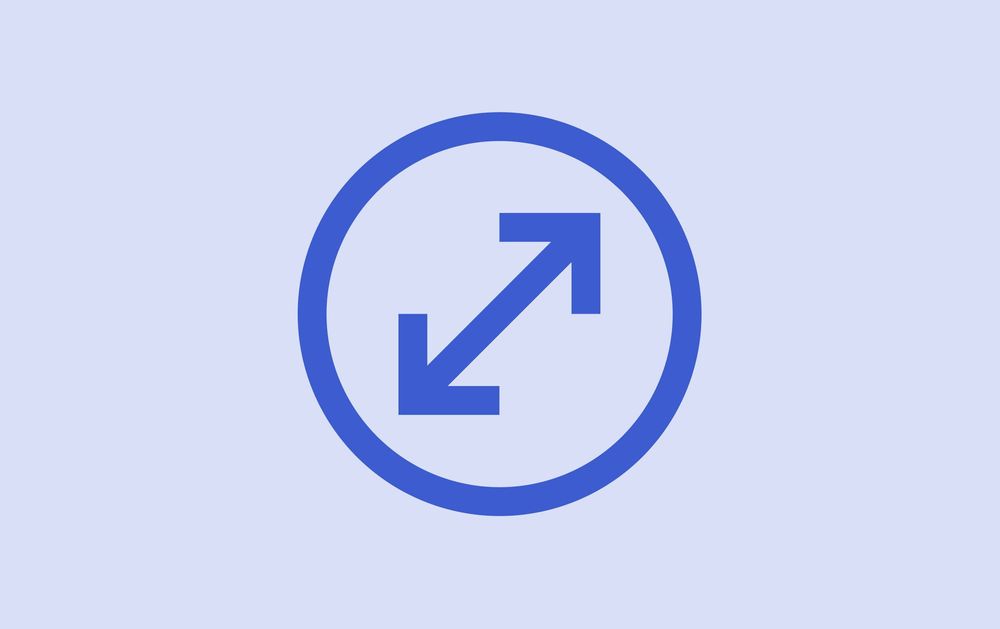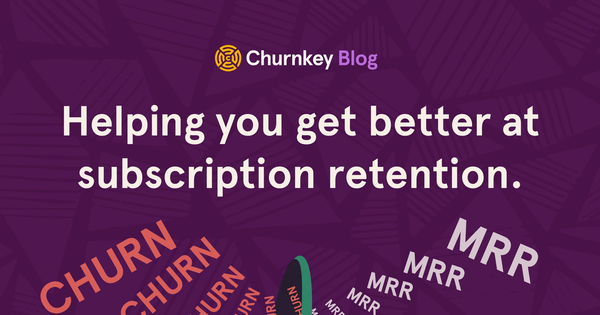Churn Analysis: From Measurement to Prevention
If you're struggling to analyze churn, we’ll share what we've learned over almost a decade of running SaaS companies.

Managing churn is a vital aspect of every SaaS company. To retain your customers, you need to understand why they are unsubscribing, know how many have stopped using your services, identify which touchpoints are losing you customers, and so on.
But how should you and your company approach churn analysis? Based on our years of experience with multiple B2C and B2B companies, we’ll share some best practices for each step of your churn analysis cycle.
Churn analysis is the evaluation of your customer churn/attrition rates. The goal? To discover why customers leave and how to prevent it. If you want to get a crash course in collecting churn data, here’s a bit about how to collect insights from cancelling customers.
One more thing: before moving into the churn analysis cycle, there are several types of churn with which you should familiarize yourself. These include voluntary, involuntary, and revenue churn.
Why should your company focus on churn analysis?
Retaining customers costs five times less than obtaining new ones. In fact, according to Invesp, increasing retention rate by 5% can improve profits by 25% or more. As such, online businesses at every stage can benefit from focusing on churn, even if you’re early. Here are some other benefits that come with analyzing your churn:
Discover growth opportunities.
Churn analysis helps to identify customer behavior at every touchpoint within your product. A better understanding of customer expectations and needs allows you to build strategies to improve customer experience. It also helps in building personalized engagement and marketing strategies to attract customers.
Find out what drives churn within your company.
Just knowing your churn rate is not enough. If you don’t understand what is causing the churn, it is difficult to improve. Churn analysis prevents you from making random assumptions on customer retention issues. This saves you from implementing generic changes via tactics found online without reason.
Analyzing customer churn gives you a better idea of what leads to your customer churn and what you should change. As such, you can implement changes with controlled tests to measure their impact and gauge effectiveness.
Uncover weaknesses of your product.
Through churn analysis, you can uncover trends and motivators behind why customers are leaving. It could be specific features that customers did not find useful, the price sensitivity of consumers towards your pricing models, etc.
Additionally, you can gain insights into how users interact with your product throughout the product lifespan, and identify where customers drop off. Through these insights, you can learn what customers like and amend what they dislike to improve customer satisfaction.
Improve customer retention.
With historical customer data, a company can predict their churn and adopt proactive approaches towards customer retention when certain churn indicators arise. In downturns, churn analysis also helps identify at-risk customers, and helps to guide implementation of suitable approaches (e.g., allowing customers to pause subscriptions) to retain these customers.
When should you be performing churn analysis?
A good practice is to perform churn analysis when you implement a change that could negatively affect your churn rates. Analysis should also be performed when an unexpected result is observed. For example, this could include a sudden spike in churn rates, an increasing trend of churn rates over the past few months, and so on.
These red flags could be indicators that there is an issue causing customers to leave, and it is time to look into the data to find out what’s going wrong. However, keep in mind that not all churn triggers are bad. You may have increased prices, resulting in customers leaving, but also raising your overall monthly revenue at the same time.
The Churn Analysis Cycle
Step 1: Measuring and auditing your churn numbers
First, you need to gain an understanding of how customers are leaving through a churn audit, which Churnkey offers for free. Get to know the churn rate for each subscription plan, by billing intervals, and by cohorts. You’ll also get a churn report that you can cross-reference with industry benchmarks
- The industry average for B2B company churn rates = 5%
- The industry average for B2C company churn rates = 7.05%.
Using these as guidelines, you can gauge your company’s performance and where you stand according to industry standards.
Step 2: Compare churn with other relevant metrics
When performing your churn analysis, refer back to key performance indicators.
Some key points to analyze include:
Customer engagement, usage, and requests for support.
Telltale signs of customer churn include a decreasing usage rate. Monitoring trends among how long your customer has used your service before displaying signs of declining usage rates can help you pick out at-risk customers much earlier.
Monitoring the frequency of support tickets is another indicator of customer satisfaction. An increasing number of support tickets could suggest a product that’s too hard to use, or a product with many issues (bugs, crashes, etc.). On the contrary, receiving less tickets than normal could also suggest declining user engagement with your product.
Industry and direct competitor’s pricing models.
What kind of deals and pricing packages are you offering? Are they widely used in the market? Monitoring consumers' price sensitivity and constant re-evaluation of your pricing plans is important in staying competitive.
How likely are your current users to upgrade existing plans?
Through your analysis, you can identify certain customer types that are more likely to upgrade their subscriptions. It can also be useful in determining touchpoints where upselling is most effective. Placing emphasis on improving relationships with users through these key areas will help with securing the value of existing subscriptions.
Customer behavior, preferences and drop-off points.

In the above offboarding flow, customers can either keep using what you offer or leave. But within these two categories, you can still identify many different patterns of behavior that you can use to reduce churn.
Through churn analysis, you can sort and filter customer types based on similarities in behavior. For example, customer types that:
- Use certain features most or least
- Has engagement rates likely to decrease after a specific time frame
- Are at-risk of being victim to the respective churn types
This enables you to better allocate resources towards designing strategies that re-engage each customer type, such as offering discounts.
Use Churnkey’s session recordings for a better analysis of customer drop off points. Understand how customers react to your cancellation flow with live sessions. Once you know what makes them pause, you can create better offboarding workflows and improve the overall user experience.
Customer segmentation.
This process involves grouping users with similar traits to uncover trends. Adopt tools that allow configurable segmented churn analysis, like this:

Through this process, you will be able to observe whether:
- Churn risk differs depending on how long customers have been using your product
- How different incentives affect churn rates (discounts, coupons, offers, etc.)
Step 3: Implement churn prevention practices
Now that you know why your customers are leaving, you can design processes to prevent churn and decrease churn rates. These are some more commonly adopted practices:
Ensure that you have a proper offboarding process
With Churnkey, you can get offboarding off your plate. Reduce cancellations by serving up the right offer at the right time. Our dynamic offer feature allows you to customize offboarding packages with incentives according to customer needs ahead of time. Present customers with greater value each time they hit that cancel button.

Monitor cancellation insights and effectiveness of offboarding incentives.
Are you offering the right incentives to retain your customers? Gain oversight on what causes customers to leave, and whether your incentives are attractive enough to keep them engaged.

Collect regular feedback from customers.
Apart from collecting SaaS user cancellation insights, it is a good practice to send out simple outreach emails with a personal touch from the CEO. Here’s a great example from ScrumGenius, a standup bot.

This is a good way to re-engage cancelling users and show customers that you care that they left, even if you don't receive a reply.
Acknowledge customer feedback and implement changes.
Customers are generally more supportive towards businesses when they feel involved in your decision-making processes. Use open-ended questions in your churn surveys and let customers know how important their feedback was. Use emails and social media channels to let them know that a better version of the product will be released and encourage survey responses.
Notify customers when the changes they suggested have been added.
The process does not stop once your product has been updated. Customers need to be informed of changes to know these new features exist. Follow up with users who have provided suggestions for new features that are implemented (both existing and churned customers).
Use this opportunity to thank users for their input, encourage further engagement, and ensure that no one is left out of the feedback loop.
Bring your churn analysis to another level with Churnkey.
Enhance your growth potential and build a bigger SaaS business through better churn management.



